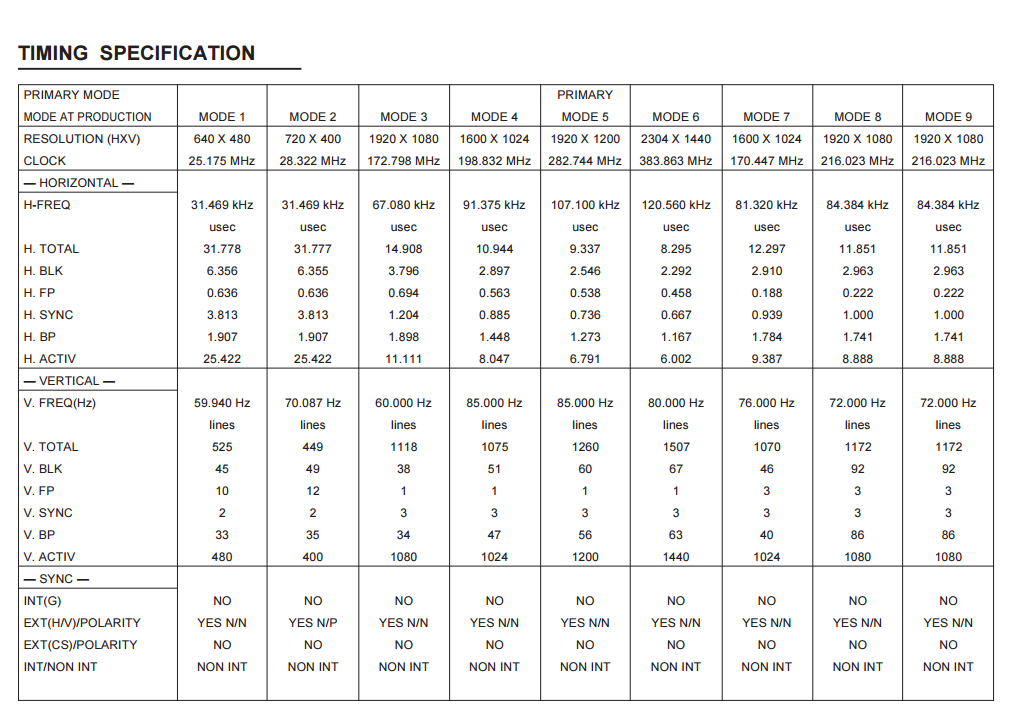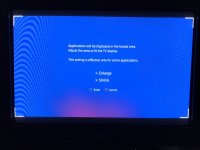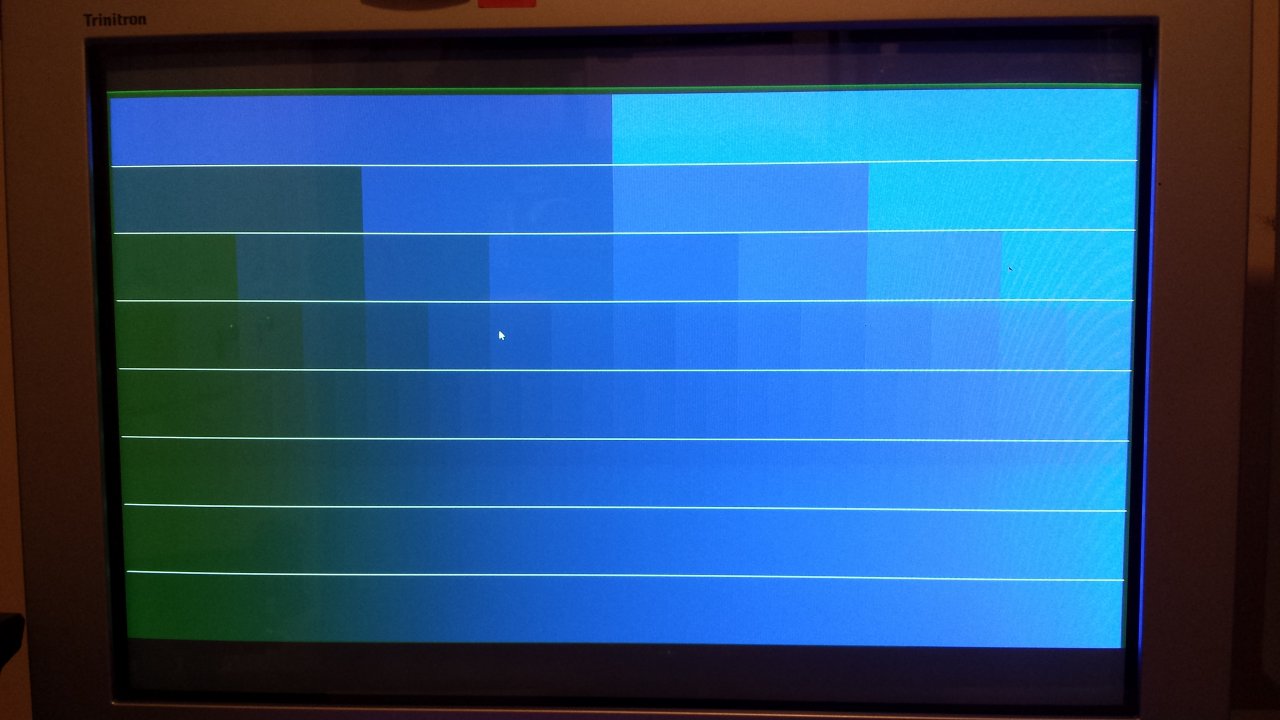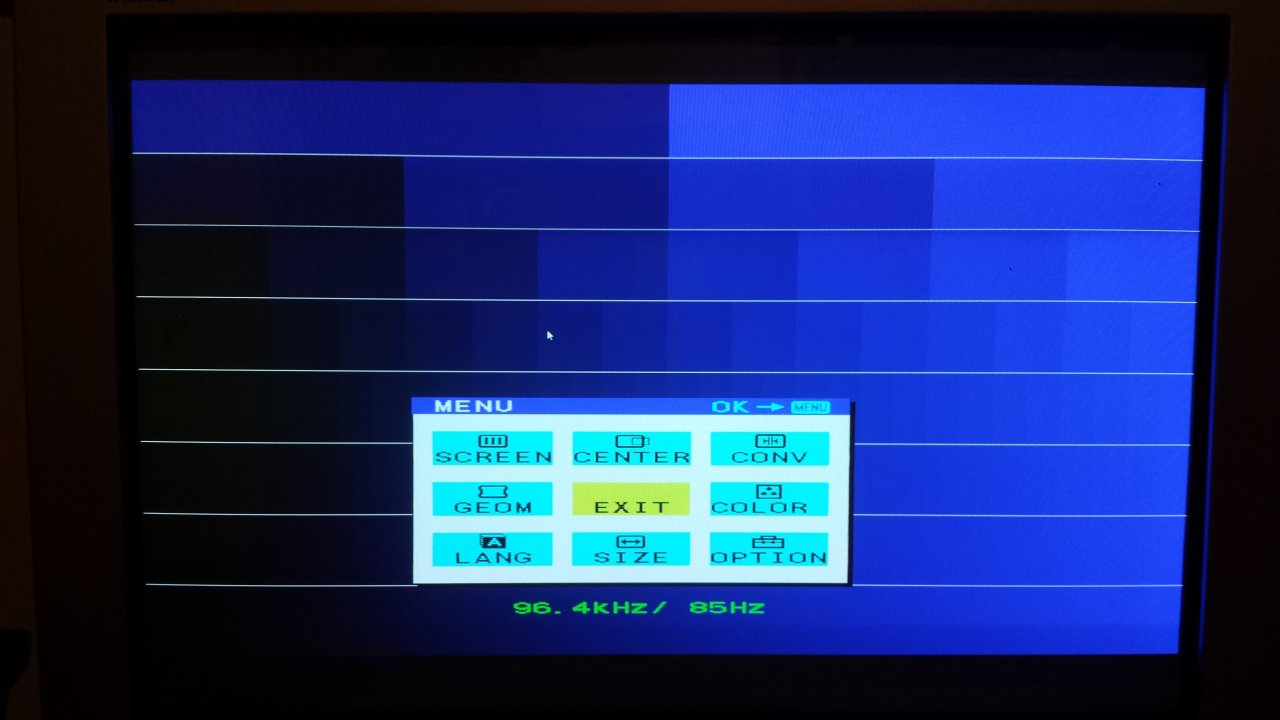jbltecnicspro
[H]F Junkie
- Joined
- Aug 18, 2006
- Messages
- 9,524
Not sure what question I'm trying to answer, so here's a general summary of my experience with WinDas, signals, and modes:
My experience has been that signal generators are the easiest way to go, but the stumbling block that tripped me up early on was that I was not resetting the monitor before making adjustments.
I'll try to make this short, but all Sony multiscan monitors / projectors have a set of internal modes that are preset at the factory called preset memories. Any time you feed the monitor a signal it first checks to see if there's a match in its preset mode. If it doesn't find a match, it will then look in the user modes. User modes are automatically created, and for the most part, are beyond the end users control. To create a user mode, simply dial in a scan rate that doesn't match any of the preset modes, and the monitor automatically stores that scan rate in a new user mode memory. If that mode is dialed up again, the monitor will recall that memory and use it.
It's a very nifty feature in normal use, but can get in the way when doing calibrating. I'm not really sure what causes this, but if you try and do a WinDAS calibration on your monitor without doing a reset all, the monitor likes to report different modes to the computer. For my F520 and Artsian, if I don't do a reset all, and dial up Mode 2 (1600x1200 85hz), the monitors will both report Mode 10 back to WinDas. Reset the monitors and they're back to reporting Mode 2. Same with FW900 - I seem to recall it reporting back Mode 14 or Mode 17, when in fact it should have been reporting Mode 5. Reset the monitor (in the FW900's case, press and hold reset for a while until it blinks a couple of times) and then it's back to reporting the correct modes.
Why would it do this? I'm not really sure, but I *think* that variances in signals cause the monitor to select another user mode if there is one, and I think our computers and less-than-perfect output devices are responsible for this. The G70 allows users to see what memory block the projector is using, and it does give a little insight into this. For example, if I set frequency sensitivity to "High", it will change modes when going from my blu ray player to my DVD player, even though both are set to output 1080p! If I set the frequency sensitivity to low, I can get by with it only using one memory mode between the two. Both players think they're outputting 1080p, but according to the projector the blu ray player is outputting 67.5 Khz, while the DVD player is doing 67.4 Khz. If I plug in my computer and select 1080p, then the projector now has to determine whether or not it will select the memory that has the 67.4 Khz memory (Memory Block 13 in this case), or 67.5 Khz (Memory Block 24). Sometimes it selects 13, sometimes it selects 24. If I lower the sensitivity level to "low" then 99% of the time it just selects the 67.4 Khz.
If I set the frequency sensitivity to low, I can get by with it only using one memory mode between the two. Both players think they're outputting 1080p, but according to the projector the blu ray player is outputting 67.5 Khz, while the DVD player is doing 67.4 Khz. If I plug in my computer and select 1080p, then the projector now has to determine whether or not it will select the memory that has the 67.4 Khz memory (Memory Block 13 in this case), or 67.5 Khz (Memory Block 24). Sometimes it selects 13, sometimes it selects 24. If I lower the sensitivity level to "low" then 99% of the time it just selects the 67.4 Khz.
Our monitors don't give us the option to select the sensitivity of the scanning detection. And I'm almost certain that the different timing standards (CVT - I'm looking at you) cause the monitor to select the correct resolution, but since CVT doesn't match GTF (or is it DMT? I forget which standard the old GDM's adhere to) exactly, the monitors simply create new user modes.
TLDR; Before doing any calibration do a full reset on your monitor. It will save you headache later. Note - if you don't reset your monitor, WinDAS won't stop you from calibrating if you're using the wrong mode (except for Factory Preset adjustment mode), but why would you want to?
In order from easiest to most difficult, here's my experience running WinDAS:
1. Running WinDAS with a compatible generator attached to it. By far the easiest because WinDAS selects the modes and patterns for you. It cuts down your calibration time to minutes and not hours (for geometry at least).
2. Running WinDAS with a generator that's not compatible. You can create your own modes and patterns and create a workflow
3. Running WinDAS with a computer attached. This one takes the longest and is potentially the least precise. In my opinion, only do this if you have no other choice or don't want to shell out for a generator.
And of course, there are no short cuts on time for doing a white balance adjustment. That's the most time consuming part of it, and shouldn't take minutes. It should take a couple of hours (or many hours depending on how critical you are). For most users who aren't doing color-critical applications, simply being within the tolerances specified by WinDAS should be enough.
That's really it. WinDAS isn't hard if you have the right tools and have practiced. Just beware that it is service-tech software and like all service software - it assumes you know what you're doing all the time. You can most definitely fuck your monitor up beyond repair. In my opinion and in my experience - most people do NOT need to do an overhaul-level calibration on a CRT monitor. Most people should only need to perform touch-ups on their screen and get the white balance levels in check. Feel free to do a ground-up adjustment (it will take some time) to attain that last 5% of perfection. But ALWAYS back up your DAT file in case you don't.
My experience has been that signal generators are the easiest way to go, but the stumbling block that tripped me up early on was that I was not resetting the monitor before making adjustments.
I'll try to make this short, but all Sony multiscan monitors / projectors have a set of internal modes that are preset at the factory called preset memories. Any time you feed the monitor a signal it first checks to see if there's a match in its preset mode. If it doesn't find a match, it will then look in the user modes. User modes are automatically created, and for the most part, are beyond the end users control. To create a user mode, simply dial in a scan rate that doesn't match any of the preset modes, and the monitor automatically stores that scan rate in a new user mode memory. If that mode is dialed up again, the monitor will recall that memory and use it.
It's a very nifty feature in normal use, but can get in the way when doing calibrating. I'm not really sure what causes this, but if you try and do a WinDAS calibration on your monitor without doing a reset all, the monitor likes to report different modes to the computer. For my F520 and Artsian, if I don't do a reset all, and dial up Mode 2 (1600x1200 85hz), the monitors will both report Mode 10 back to WinDas. Reset the monitors and they're back to reporting Mode 2. Same with FW900 - I seem to recall it reporting back Mode 14 or Mode 17, when in fact it should have been reporting Mode 5. Reset the monitor (in the FW900's case, press and hold reset for a while until it blinks a couple of times) and then it's back to reporting the correct modes.
Why would it do this? I'm not really sure, but I *think* that variances in signals cause the monitor to select another user mode if there is one, and I think our computers and less-than-perfect output devices are responsible for this. The G70 allows users to see what memory block the projector is using, and it does give a little insight into this. For example, if I set frequency sensitivity to "High", it will change modes when going from my blu ray player to my DVD player, even though both are set to output 1080p!
Our monitors don't give us the option to select the sensitivity of the scanning detection. And I'm almost certain that the different timing standards (CVT - I'm looking at you) cause the monitor to select the correct resolution, but since CVT doesn't match GTF (or is it DMT? I forget which standard the old GDM's adhere to) exactly, the monitors simply create new user modes.
TLDR; Before doing any calibration do a full reset on your monitor. It will save you headache later. Note - if you don't reset your monitor, WinDAS won't stop you from calibrating if you're using the wrong mode (except for Factory Preset adjustment mode), but why would you want to?
In order from easiest to most difficult, here's my experience running WinDAS:
1. Running WinDAS with a compatible generator attached to it. By far the easiest because WinDAS selects the modes and patterns for you. It cuts down your calibration time to minutes and not hours (for geometry at least).
2. Running WinDAS with a generator that's not compatible. You can create your own modes and patterns and create a workflow
3. Running WinDAS with a computer attached. This one takes the longest and is potentially the least precise. In my opinion, only do this if you have no other choice or don't want to shell out for a generator.
And of course, there are no short cuts on time for doing a white balance adjustment. That's the most time consuming part of it, and shouldn't take minutes. It should take a couple of hours (or many hours depending on how critical you are). For most users who aren't doing color-critical applications, simply being within the tolerances specified by WinDAS should be enough.
That's really it. WinDAS isn't hard if you have the right tools and have practiced. Just beware that it is service-tech software and like all service software - it assumes you know what you're doing all the time. You can most definitely fuck your monitor up beyond repair. In my opinion and in my experience - most people do NOT need to do an overhaul-level calibration on a CRT monitor. Most people should only need to perform touch-ups on their screen and get the white balance levels in check. Feel free to do a ground-up adjustment (it will take some time) to attain that last 5% of perfection. But ALWAYS back up your DAT file in case you don't.
![[H]ard|Forum](/styles/hardforum/xenforo/logo_dark.png)




